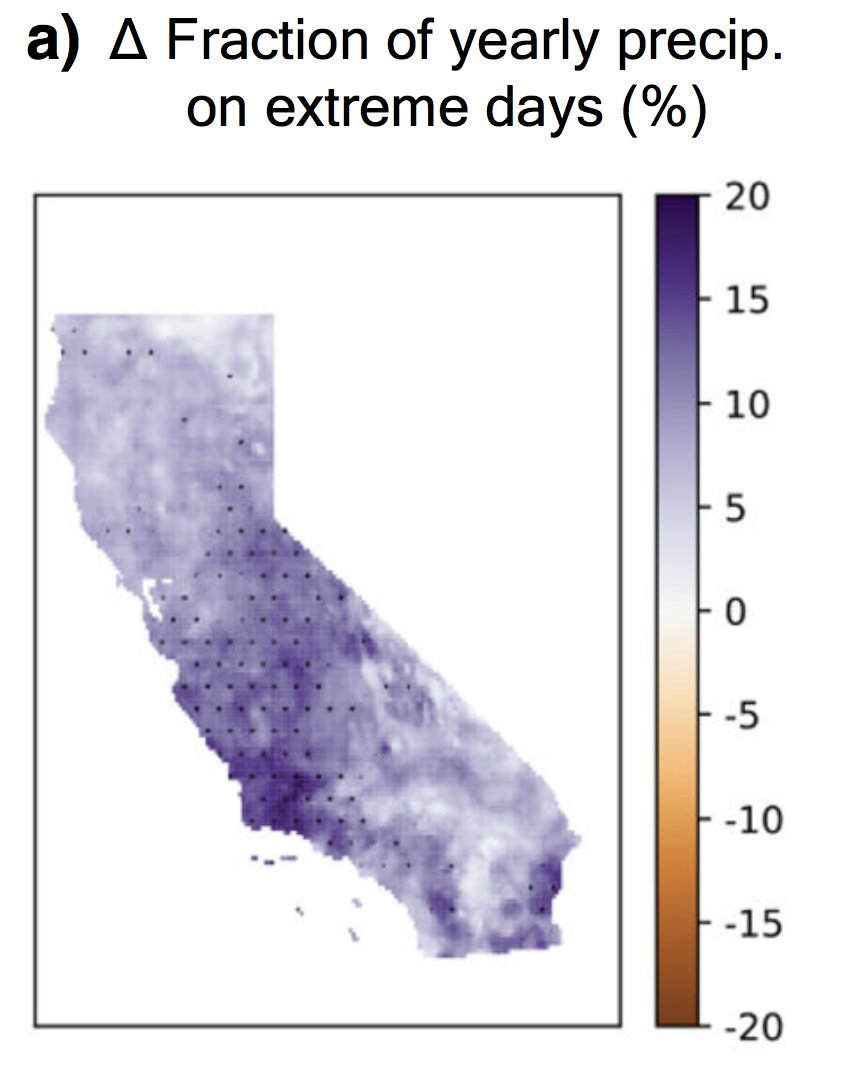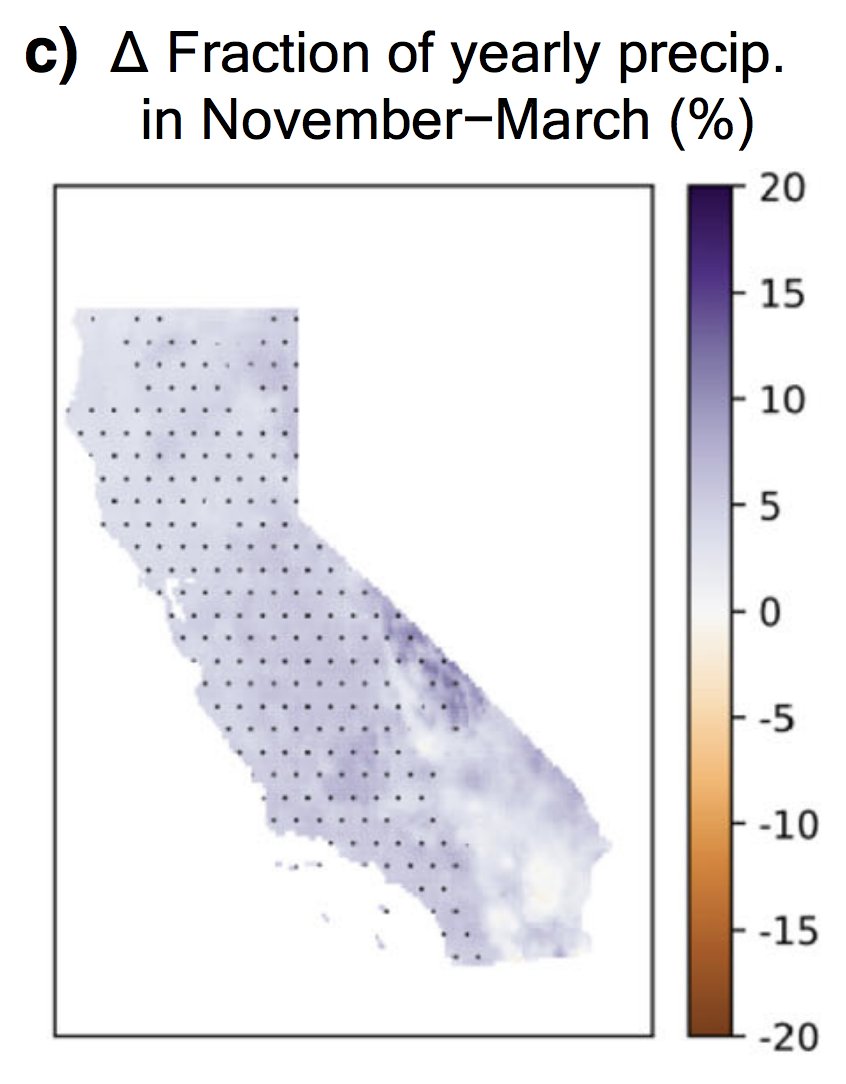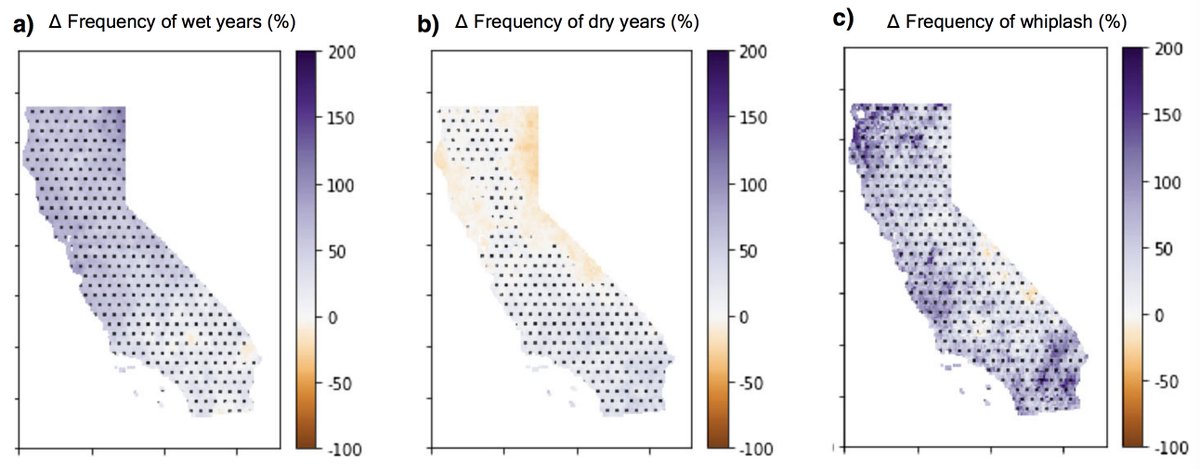New research led by @ggpersad & featuring @PabloWater. Using downscaled climate model simulations, we show that there is unexpectedly high inter-model agreement re: increasing extremity of California hydroclimate due to #ClimateChange. (1/n) https://link.springer.com/article/10.1007%2Fs10584-020-02882-4">https://link.springer.com/article/1... #CAwater
In general, climate models agree than an increasing fraction of California& #39;s overall precipitation will become concentrated into the most intense events--and that the most extreme precip events will themselves be substantially more intense. (2/n) https://link.springer.com/article/10.1007%2Fs10584-020-02882-4">https://link.springer.com/article/1... #CAwater
There is also agreement that CA& #39;s already pronounced precipitation seasonality will become even sharper--with more rain concentrated into winter months at expense of the autumn & spring. Consider the wildfire season implications... (3/n) https://link.springer.com/article/10.1007%2Fs10584-020-02882-4">https://link.springer.com/article/1... #CAwater #CAfire
We also sought to replicate findings from our "increasing precip whiplash" work in 2018 ( https://www.nature.com/articles/s41558-018-0140-y).">https://www.nature.com/articles/... We find a strikingly similar projection of increasing precip whiplash--driven mainly by increasing wet years but also a smaller increase in dry years. (4/n) #CAwater
Perhaps unsurprisingly, but still importantly, we find very large decreases in California& #39;s snowpack. In high warming scenario, lower/mid elevation snow regions see near complete loss of snowpack during the last few decades of this century. (5/n) https://link.springer.com/article/10.1007%2Fs10584-020-02882-4">https://link.springer.com/article/1... #CAwater
We also explicitly consider implications for water resources. More intense & strongly seasonal precip, plus huge snowpack declines, yield increased winter outflow but large decreases in storage rest of year--precisely when we need it. (6/n) https://link.springer.com/article/10.1007%2Fs10584-020-02882-4">https://link.springer.com/article/1... #CAwater
To me, one of the most striking findings here is that different models exhibit relatively high agreement regarding projected changes in extremes & seasonality--even though they don& #39;t all agree on changes in overall mean precipitation!! (7/n) https://link.springer.com/article/10.1007%2Fs10584-020-02882-4">https://link.springer.com/article/1... #CAwater
Ultimately, all of this suggests that we can actually make higher confidence statements regarding California& #39;s hydroclimate future than has previously been assumed--& that these changes are going to seriously test our existing water systems. (8/8) https://link.springer.com/article/10.1007%2Fs10584-020-02882-4">https://link.springer.com/article/1... #CAwater

 Read on Twitter
Read on Twitter






